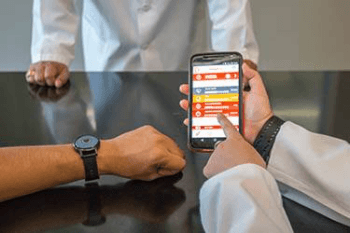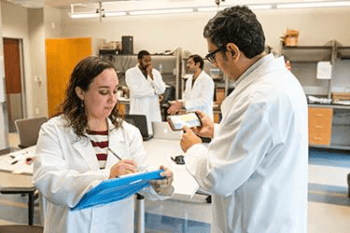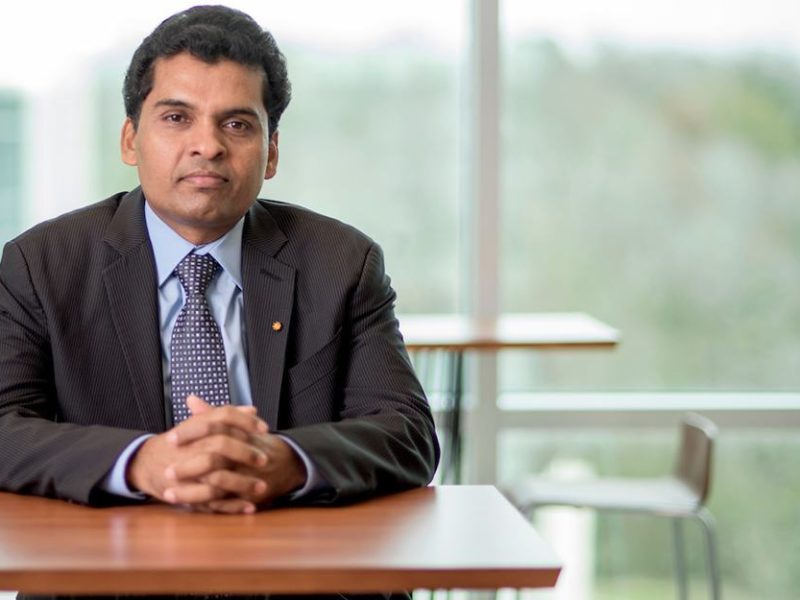Engineering Prof Developing A Smart Watch To Monitor Nurse Stress, Workload
High workload and stress are becoming major contributors to medical errors in modern nursing. Nurses interact with a wide range of medical equipment in a highly collaborative environment to provide care for multiple patients.

Dr. Farzan Sasangohar, assistant professor in the Department of Industrial and Systems Engineering at Texas A&M University, is working to help nurses manage their workload by utilizing a smart watch to monitor nurses’ well-being and deliver an overall observation of a unit’s workload and stress level.
“This project is a continuation of my previous research on developing a technology to mitigate unnecessary interruptions to nurses in the ICU,” Sasangohar said. “One of the limitations of the technology we developed was that nurses had to push one of the buttons or a foot pedal to turn on a display that indicated their availability to handle interruptions.”
Several of the participating nurses reportedly experienced difficulty growing accustomed to the extra step involved in engaging the display. The compliance rate of the initial prototype was very low. The nurses engaged the tool without being prompted in only 31 percent of all high-severity tasks.
“In this research we are investigating ways to make this task easier by introducing automation,” Sasangohar said. “Using smart wearable sensing the system can identify periods of high workload or stress and can turn the display on or off.”
The work is still in the prototyping phase, but will ultimately result in an intelligent system that automatically collects information from nurses about their stress and workload levels and communicates this information to several displays that inform their colleagues about their availability status.
“The system will track key biometric data to identify changes in stress and workload across nursing shifts and critical tasks,” Sasangohar explained. “This information will then be sent to a display that indicates a nurse’s availability.”
Sasangohar and his students are not only designing the watch, but the entire intelligent system that picks up the information from nurses and sends it to other parts of the system wirelessly.
“An example of other parts of the system are displays on top of each ICU door which provide information about the availability of that nurse,” Sasangohar said. “If you know the nurses are going through high periods of workload and that information is processed by our microsystem, the display would automatically show the do not disturb or do not interrupt message outside of the room they are working in.”
To maximize the time spent in assessing the workload of an entire unit, the team is also working on technology used by nurses in charge, or unit managers, to provide a big picture view of the entire unit’s workload.

“Let’s say you have a nurse manager who is managing an ICU of 17 nurses and 20 beds,” Sasangohar said. “With just a glance, they can see how many nurses are experiencing high workload so, they can adjust their staffing level.
Currently, nurse managers go room by room to verbally assess their employee’s workload. This development will enable the unit managers to have a birds-eye view of the unit, decreasing wasted time used to manually check on each nurse.
“Sometimes the nurses are reluctant to talk about being overworked,” Sasangohar said. “They don’t want to admit they are not available.”
Most engineered systems do not engage the user in the development process. As a result, the user’s expectations are not met and the systems fail due to the lack of engagement and usability.
“The user-centered design approach is the systematic process of involving users in the design and development process to ensure that the system is designed based on user’s mental model, not the designer’s.” Sasangohar said. “In this research we use a participatory design method that involves nurses throughout the process.
There are other applications of workload monitoring such as providing biofeedback to nurses, allowing them to see a trend in their heart rate or workload patterns over previous shifts.
“We are currently planning on a pilot study to be conducted at Memorial Hermann Hospital where we’ll have nurses in an ICU unit try our tool while we observe,” Sasangohar said. “I expect a large-scale feasibility study by the end of 2017, where all nurses in an ICU will try wearing this tool for several weeks.”
Sasangohar’s research is a collaborative effort with Dr. Steven Sutherland and Dr. Karen Alexander at University of Houston-Clear Lake and Heather Wallace at Memorial Hermann Southeast Hospital. Sasangohar’s Ph.D. students, Kunal Khanade and Carolina Rodriguez, and undergraduate students, Abby Hutton and Izayah Allen, have also contributed to the work.
This article by Lorian Hopcus originally appeared on the Texas A&M Engineering website.





